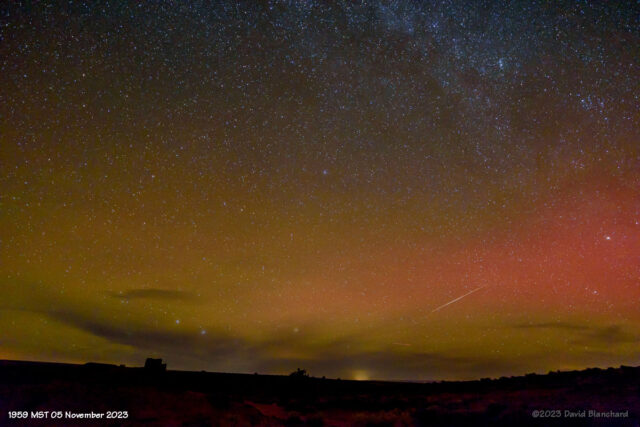A strong geomagnetic storm a few days ago (05 Nov 2023) triggered brilliant auroras over high and middle latitudes. At lower latitudes a different phenomena was observed. This was a Stable Auroral Red (SAR) Arc. But this feature is neither stable nor an aurora.


From the SpaceWeather.com web site:
During this past weekend’s strong G3-class geomagnetic storm, low-latitude auroras spread as far south as Texas and Arizona. Upon further review, most of those lights were not auroras at all…
SAR arcs were discovered in 1956 at the beginning of the Space Age. Researchers didn’t know what they were and unwittingly gave them a misleading name: “Stable Auroral Red arcs” or SAR arcs. In fact, SAR arcs are neither stable nor auroras.
Auroras appear when charged particles rain down from space, hitting the atmosphere and causing it to glow. SAR arcs form differently. They are a sign of heat energy leaking into the upper atmosphere from Earth’s ring current system–a donut-shaped circuit carrying millions of amps around our planet.
Okay, so it was not an aurora. But it was still pretty amazing to witness and photograph. I even managed to capture a meteor that was part of the Taurid shower moving across the SAR.
But wait, there’s more. There was green airglow in the same part of the sky as the SAR.
Time-lapse of SAR arc and green airglow over northern Arizona (1908–2217 MST 05 November 2023.)
Summary: SAR arc, Taurid meteor,green airglow…and some coyotes.